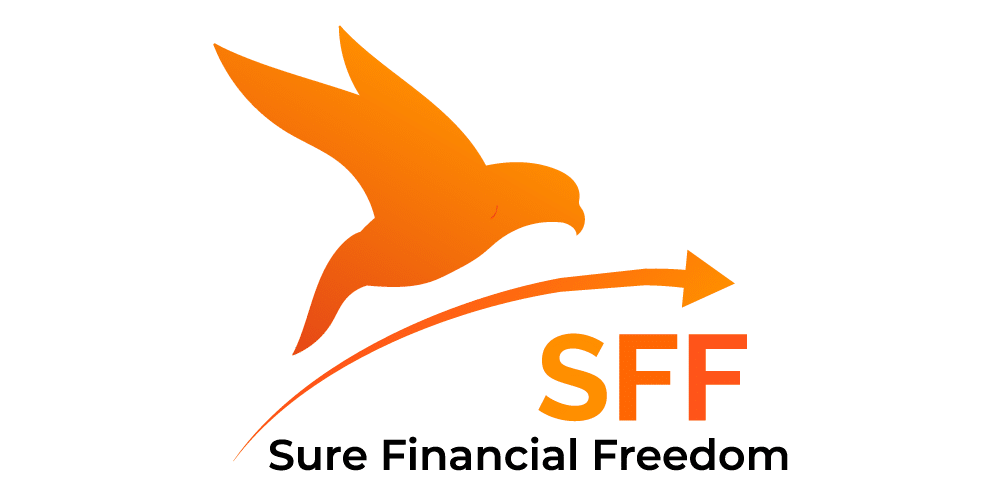A student loan is something that you might not feel a burden, in reality, it is. According to the credit report agency Experian, the gross total of outstanding student loan is 1.41 trillion in the US, which is second to that of mortgage loans.
Economists call student loans “good debt,” since they offer opportunities for education that would not be available otherwise.
Unfortunately, after being done with schools and studies, this debt sits rock hard on a student’s shoulder and impedes to focus on his or her career and other financial aspects.
However, there is no need to feel lost or down. A proper guideline with the right strategies can help a student deal with his or her debt conveniently.
Following are some steps to go through in this respect:
Step 1: Begin your journey of student loan repayment
Research Your Loans
- Track your loans
Yes, maybe you are not even aware of all the student loans you have. As you can’t go in the past and ask your 18-year-old self to keep track of all the loans you took, you’ve to work on it now.
To begin with, to find some federal loans, search the National Student Loan Data System. Contact them directly to verify what you owe to private lenders.
Ordering a free copy of your credit report to see who your lenders are is another choice.
- Explore your payment options
Depending on what you receive, individual loans offer the option to move to an income-based repayment plan.
You may apply for a conditional deferment if you are unable to meet the payments at all.
- Make yourself aware of the loan details
If you deal with many loans, which is always the case, try to tackle the loan with the highest interest rate first.
Understand what the minimum payment would be, in addition to the interest rate of each loan, and which loans will qualify for items such as deferment, loan forgiveness, and a better payment schedule.
Do not forget to calculate the total of your debt as well.
Review and Use the Grace Periods
You will note that each loan has a grace period when you pull together the details (the amount of time you have after graduation to start paying back your loans).
These may vary, too. For instance, Stafford loans have a grace period of six months, while Perkins loans offer you nine months before you have to begin making payments.
Why not start right away? If your payment is $300 per month after the grace period, get out in front of the loan now.
And you will also create the habit of putting aside that $300 each month.
Choose a student loan repayment plan
(Source: MJL Solutions)
There are various payment options available to look into:
- Graduated Repayment
It increases your monthly contributions over the ten-year term of the loan every two years.
As the decade continues, this strategy allows for low payments early on, accommodating entry-level wages and assuming that you can get rises or move on to better-paying jobs.
- Income Contingent Repayment
It calculates taxes at no more than 20 percent of your salary for up to 25 years, depending on your adjusted gross income (AGI).
Any balance on your mortgage is forgiven at the end of 25 years.
- Loan Forgiveness Programs
For various federal student loan repayment programs, college loan borrowers who work in the public sector may apply.
Next up is the Public Service Loan Forgiveness initiative, which opens the door for public service career workers to loan forgiveness.
Eligibility is relatively straightforward: you need to be a public sector worker (federal, state or municipality) using an eligible loan repayment plan who has made on-time monthly student loan payments for 10 years.
In the meantime, for a government agency, or tax-exempt 501(c) (3) organization, or other eligible non-profit organization, the employee must operate full-time.
It’s not easy to clear any of the obstacles above. Since borrowers missed a single payment or didn’t work for the right company, most federal loan repayment applications are turned down.
However, it is worth a shot. Find out more at StudentAid.gov.
- Teacher Loan Forgiveness Program
Via the Teacher Loan Forgiveness Initiative, another program run by the US, teachers have an easier path to student loan forgiveness as per the Education Department.
The program is specifically targeted at public school teachers, especially those teaching for at least five years in a row in low-income community schools.
This initiative would certainly not erase all the federal student loan debt. Still, it is common to see public school teachers shed between $5,000 and $17,500 in student loans, depending on the topic of study taught (teachers of science and mathematics qualify for more significant amounts of loan forgiveness.
- Federal Loan Cancellation
You might be eligible to apply for Perkins Loan cancellation if you have taken out a Federal Perkins Loan, one of the most widespread student loan programs.
(Federal Perkins Loans account for $6.1 billion in loans and are used by two million borrowers, but as of September 30, 2020, the loan program has since closed.)
Higher-risk professionals are first in line for Perkins Loan cancellation-think U.S. service veterans, firefighters, police and other first responders, nurses and international volunteers working with or with federal government agencies such as the Peace Corps.
But in the meantime, someone who has taken out a Perkins Loan will apply and reduce their student loan debt substantially.
It’s not comfortable doing so. For instance, before the policy ended last September, you will have to take out a Federal Perkins Loan.
You’ll still need to get written approval from either your college or university or the student loan servicer to apply for the federal loan repayment program.
Also, if a Perkins Loan offers you redemption, don’t expect it to happen immediately. A more incremental approach is favored by the Department of Education, gradually lowering the student loan burden over five years.
- Employer-Based Student Loan Payment Plans
Companies such as Fidelity Investments, Hulu, and Penguin Random House, and several more, are assisting student loan workers to pay down the debt.
More firms see the importance of providing student loan repayment assistance as a contribution to the workplace, which mostly comes in the form of 401(k)-like programs where employers match the loan repayment dollar for an employee.
Studies show that younger employees tend to work for employers that provide student loan payment aid, the category of employee most likely to have student loan debt.
That makes the ultimate supply and demand product for employer-based student loan payment plans, so expect more businesses to begin providing such plans, if only to draw new talent and keep up with the market, benefits-wise.
In general, the longer an employee works for the organization, the greater the financial amount that the employee may earn for his or her student support.
Check with the human resources or benefits officer of your business for a heads-up on any student loan support you can get from your company.
Consider to consolidate loans
You may want to look at the option of consolidating all your loans once you have explored different repayment plans.
The big plus of restructuring is that the weight of your monthly payment burden is also reduced. It often also increases the payoff cycle, which is a mixed blessing: more debt payment time, but also more interest payments.
What’s more, there might be a higher interest rate on the combined loan than on any of your other loans. Before you sign up for consolidation, be sure to compare loan terms.
You will also forfeit the right to the deferment options and revenue-based repayment plans that are attached to certain federal loans if you merge. To get more on this idea, visit Student Loan Debt: Is Consolidation The Answer?
Deduct the loan interest
Don’t hesitate to subtract your student loan interest until the tax season comes around. On any interest you have accrued for that tax year, you will lower your taxable income by up to $ 2,500. This information should be sent to you by your lender, but you may submit it as well or get it online. It may not make an immense difference, but it helps every little bit.
Defer payments
You may ask your student loan lender to delay payments if you are not yet working. In case, you have a federal student loan and qualify for a deferment, your interest will be paid during the approved deferment period by the federal government.
You will be allowed to petition your lender for forbearance if you do not qualify for a deferment, which enables you to automatically avoid taking out the loan for a certain period of time.
With forbearance, the principal of the loan will be added to any interest owed during the forbearance era.
Enroll for auto-debit
If you engage in an automatic payment plan, some lenders can lower the interest rate. You will also be kept away from late fees and missed payments by that form.
Skip adding more big debts
Not going out and charging a significant item on your credit card or taking out another loan might seem like common sense, but not everyone is blessed with common sense.
They might need to be updated in the short term if you have visions of a big wedding, buying an elite car or buying a home.
Step 2: Create a plan and put it into action
(Source: Wiki How)
Make a budget and follow it
It’s a serious one. If you’re not doing so already, now is the time to make a budget and stick to it. A zero-based monthly budget will let you know exactly where you should cut back and where your money is going.
You could even find “extra” money that you didn’t know you had. Use that money to cut down your student loan each month, and you’ll find yourself advancing soon.
With the help of free budgeting app EveryDollar, you can also put a line item in your budget for every student loan you pay off.
That way, when you begin to crush the student loan debt, you will see the advancement, and you will feel pretty B.A. in the process.
Pay extra on the payment
You’ve heard this one probably before. If you just pay the minimum amount per month, you don’t get anywhere quickly.
And with interest your debt is piling up, you may not break even!
You would be able to target the amount you owe at a faster rate by making larger payments. To find out how easily you can pay off your loans by making additional payments, you can use the Student Loan Payoff Calculator.
Word to the wise, though: If you pay more than the required monthly payment, the student loan servicers will add the extra sum on the payment next month.
That pushes back the due date, but you’re not going to pay off your loan any quicker. Tell your loan servicer to keep the due date of next month the same and ask them to apply the additional sum of money to your current loan balance.
Pay off capitalized interest
If the federal government subsidizes the loans, interest can accrue when you are in school, in your time of grace and through periods of deferment and forbearance. When repayment starts, the interest capitalizes, meaning your balance rises, and you’ll pay interest on a greater sum.
Paying off accumulated interest will not speed up the payout process immediately during your grace period, but it will be a smaller balance to get rid of.
Consider making regular interest payments as it is accruing to discourage capitalization. Or, when the grace period or postponement expires, make a lump-sum interest payment. That will not speed up the payoff phase immediately, but it will mean a smaller balance to get rid of.
Earn more money
If you can’t manage to save extra cash, on nights or weekends, pick up a part-time job that can help you quickly stack cash.
Then, dump the extra cash straight into your student loan debt!
Starting from driving an Uber to walking dogs, house-sitting, there’s a ton of side hustle options out there.
Bear in mind; the extra work will not last long. You’re just trying your best to kick the student loan debt out of your life.
Make financial sacrifices
As Dave Ramsey suggests,
Check out your lifestyle. What extra stuff did you deal with that you could do without?
Say Bye, a box of cable. See you, delivery boxes for candles.
May be sharing with a roommate, you will cut your housing costs in half. Do you have a guest room that isn’t used a lot these days? Rent out that sucker!
Only think about how easily you can pay off your debt if your cost of living has been reduced.
How about selling some garbage that you no longer need?
To see what you can place on eBay or Craigslist, search through your wardrobe, garage, and storage. Then, sum up what you spend each week on dining out.
Ditch the lattes and brew at home your own coffee. Have leftovers or meal planning for the week (they’re not that bad) instead of spending $10-20 on lunch.
There are plenty of creative ways to save, believe me.
Pay off student loans with the Snowball Approach
The debt snowball strategy has helped a lot of individual dumps their debt, and it can also work with student loans.
List all your loan debts from the smallest balance to the largest (that includes private loans, secured loans, unsecured loans, you name it). Begin to pay first on the smallest student loan balance. Throw in some additional money that you have to pay off that first debt while only paying the minimum on everything else.
Shift to the second-smallest balance until you have paid off the first debt. Take all you put into the first one and add it to the second balance at least.
When the debt has been paid, pass on to the next one and repeat the process until you are out of debt at last.
You can think, nope, this is going to take forever! I mean, it will certainly not happen overnight. But when you focus on the debt snowball strategy, as each student loan disappears, you can notice the progress you are making.
First, knocking out those smaller loans will give you a few fast wins and help you stay motivated to start smashing the larger student loans quickly!
Only make sure that the payment money is not pocketed when you pay off each debt-keep the momentum going by rolling the money into the next loan payment.
Use every raise and tax refund toward repaying your student loans
When people get a raise, what do most individuals do? They’re blowing through it like there is nothing. And they ask why it seemed like they weren’t getting a raise, then.
Place your extra money to pay off those student loans as you keep crushing it in your job and getting promotions as you go.
Don’t move to a house that’s larger than your need.
Don’t buy a car that’s new.
Don’t buy any threads from designers.
And don’t get a smartphone upgrade.
To make big strides in your battle against student loan debt, use your revenue boost!
The same goes with your refund for taxes.
How many people are there taking the “free money” and burning it all on a 55-inch flat-screen or new furniture?
Here is a tip: Your tax refund is not the government’s free money.
Only because you gave them so much, they’re just giving you back the money you already paid them.
Take your refund and put it straight to pay off a massive chunk of your student loans!
Consider refinancing if it makes sense
Remember that refinancing student loans isn’t the best move for anyone before you go running into an all-too-eager lender’s arms.
You are taking your loans, federal, private, mostly a combination of both, to a lender who pays them off for you as you refinance.
And the money you’ve just got, now you owe this new lender.
The purpose of refinancing is to negotiate a better rate and payment terms, which ensures that one or more lenders can pay less per month and for a shorter span of time to one lender instead of more cash for a longer period of time.
Much better, if you’re in a position to continue paying the same rate you were paying when you refinanced. And that implies that each month you throw more at the principal than you were before and stop more interest.
Plus, and here’s the best part, you can ramp up your debt snowball even faster once you knock out your student loan if you have any debt beyond your newly refinanced student loan.
However, note that you are refinancing to get a better rate and terms of payment. Do not refinance if that is not what you’re being given. You have to do your homework, or you might as well end up in a bit more in-depth than you were before.
Build a starter emergency fund
This is a fundamental component of the financial betterment plan that sets the foundation for a fully-funded safety net account to be developed. In an account separate from your daily bank account, the starter safety net fund usually ranges from $1k-$2k. If any unforeseen medical, car or home expenditures arise, it will come in handy.
Revisit the options for repayment of student loans at least once a year or if there are any changes
If you are actually making payments or not, it is necessary to check your loan repayment options. Try to go ahead and add your future payments into the budget schedule if your loans are already in deferment status. Start saving some of those payments instead of paying your loan servicer and get into the habit of paying yourself and get a sense of how they can fit into your future spending plan.
Among those making payments, borrowers between the ages of 20 and 30 receive an average monthly payment of $351. It is about more than just minimizing your current payments to select the proper repayment plan.
Significant considerations to include knowing how long it would take to become debt-free and how much you will pay in net interest for the duration of your loan. It also helps to realize that you can still alter the terms of your repayment agreement for federal student loans.
Make sure not to default on student loans
If you find yourself struggling to make your student loan minimum monthly payments, be confident of one thing: they’re not all going to vanish.
You are overdue if you quit paying for 90 days. If it lasts 270 days (nine months), you have defaulted on the loan, and it can have significant consequences.
Student loans do not have a limitations statute. In bankruptcy, it is almost impossible to get them swept out.
Throughout your life, they will stalk you. Don’t believe that you should flee.
If you make a late payment on a federal student loan, there could be a late fee of 6 percent. Ultimately, up to 15 percent of the salaries and Social Security payments will be garnished by the government.
For collection fees, the government can also subtract 25 percent of each bill, making the loan even more costly.
On your credit report, late or missed payments will show up (for up to seven years) and hurt your ranking.
An unpaid student loan debt of nearly $138 billion in past due. Throughout the first five years of repayment, two out of five student loan borrowers are delinquent.
Ask for a deferral or forbearance if you can’t afford payments. Your credit score will not be harmed by either form.
It will enhance your score when your account is brought up to date.
You will temporarily suspend payments on federal student loans if there is a short-term problem, such as job loss or medical leave. The downside: interest will also accrue on your loans, making them more costly overall.
Don’t default, whatever you do! If you can’t afford the charge, instead of just not paying, it’s best to contact your loan servicer to check your repayment option. You can build a strategy that works for you and your budget by seeking support as soon as possible.
If you are feeling burdened by your student debt, instead of delaying, start following these strategies right away. It might give off a frightening feeling at first. But, once you get the grip of it, you’ll succeed to pay off your debt smoothly in no time.






